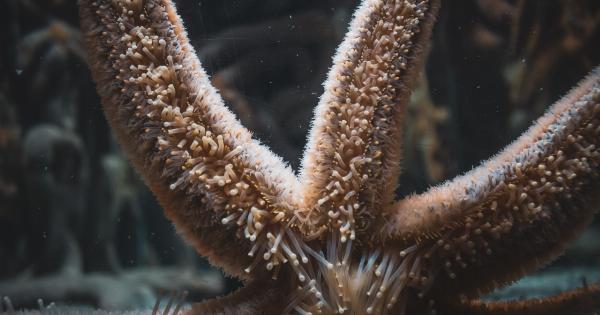When it comes to mysterious medical conditions, there is seldom a shortage of bizarre cases that leave doctors scratching their heads.
One recent case that has left the medical community baffled involves a peculiar black fluff found on a patient’s tongue. This peculiar and unexplained phenomenon has sparked curiosity among both medical professionals and the general public alike.
The Discovery
It all began when a patient, Jane Smith, visited her dentist for a routine check-up. During the examination, her dentist noticed an odd accumulation of black fluff on her tongue.
Concerned about the unusual finding, Jane’s dentist referred her to an oral pathologist for further evaluation.
Initial Assessment
The oral pathologist, Dr. Emily Williams, was startled by the peculiar nature of the black fluff. In her extensive experience, she had never encountered anything quite like it. Dr.
Williams carefully examined Jane’s tongue and took a sample of the fluff for further analysis.
Laboratory Investigation
The sample was sent to a laboratory where microbiologists and pathologists meticulously examined it under a microscope. The initial results were inconclusive, leaving the medical team perplexed.
To gain further insights, additional tests were conducted, including culturing the black fluff to identify any potential organisms present.
Unusual Findings
Several days later, the laboratory reported some unusual findings. The black fluff consisted of a combination of fungal spores, bacteria, and tiny particles of debris. This combination was extremely rare and had never been documented before.
The medical team was astounded by the complexity and rarity of the discovery.
Possible Causes
With the identification of the components of the black fluff, the medical team began exploring possible causes.
One theory suggested that the patient may have been exposed to a unique environmental factor that triggered this abnormal growth on her tongue. Another hypothesis proposed an underlying immune system dysfunction that led to the unusual colonization of fungi and bacteria.
Treatment Approach
In order to develop an effective treatment plan, the medical team consulted with various specialists, including infectious disease experts and immunologists. Due to the uncharted territory of this case, a multidisciplinary approach was deemed essential.
The patient was prescribed a combination of antifungal and antibacterial medications, alongside regular oral hygiene practices and a healthy diet.
Progress and Challenges
Over the course of several months, Jane diligently followed the treatment plan. Gradually, the accumulation of black fluff on her tongue began to decrease.
However, challenges arose when the medical team discovered that ceasing the medication prematurely resulted in a rapid regrowth of the fluff. This served as an indication that the underlying causes had not yet been fully addressed.
Further Investigations
To unravel the mystery fully, the medical team decided to conduct additional investigations. They delved into Jane’s medical history, searching for possible clues that could provide insight into her condition.
Furthermore, they collaborated with a team of environmental experts to examine Jane’s living and working environments for any potential factors that could be contributing to her condition.
A Breakthrough
After countless hours of research and consultations, a breakthrough occurred. The environmental team discovered the presence of a rare species of mold in Jane’s workplace that matched the fungal spores found in the black fluff.
This finding strongly suggested that her occupational exposure to this mold was the primary trigger for the growth on her tongue.
Long-Term Management
Armed with this newfound knowledge, Jane’s treatment plan was adjusted accordingly. She was advised to minimize her exposure to the identified mold species and given precautionary measures to ensure her safety at work.
Additionally, regular follow-up appointments were scheduled to monitor her progress and maintain her oral health.
Sharing Knowledge
The unique case of the black fluff found in Jane’s tongue has provided valuable insights into rare medical conditions.
The medical community, particularly oral pathologists, have taken this opportunity to further study and understand the intricacies of such unusual presentations. It has also highlighted the importance of collaboration between different medical disciplines to effectively diagnose and treat complex cases.
Conclusion
The discovery of the black fluff on Jane’s tongue has been a remarkable journey filled with unexpected twists and turns.
Through a combination of perseverance, meticulous investigation, and interdisciplinary collaboration, a solution was eventually found. This unusual case is a testament to the unknown wonders that continue to exist within the realm of medicine.






























